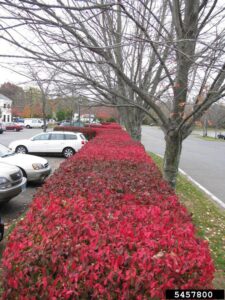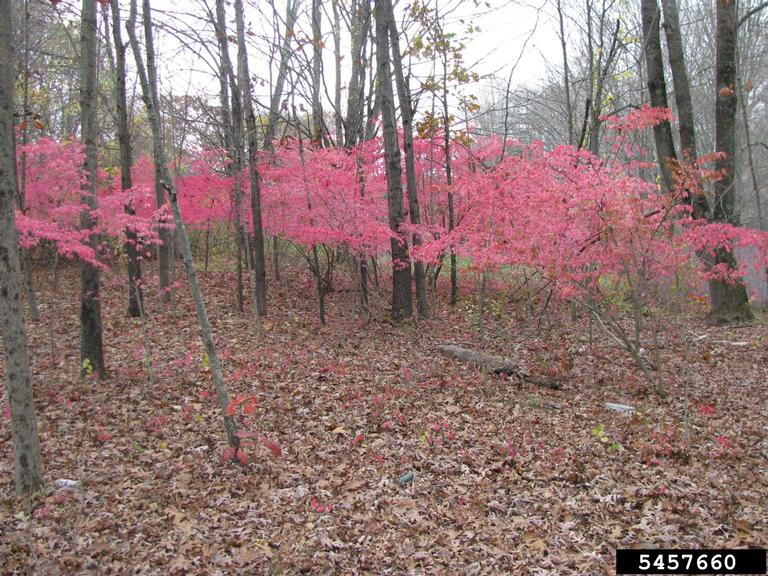By Jaqi Christopher, DNR Forest Invasive Plant Specialist, Rhinelander, Jacquelyn.Christopher@wisconsin.gov and Mary Bartkowiak, DNR Forest Invasive Plant Coordinator, Rhinelander, Mary.Bartkowiak@wisconsin.gov
With winter in full swing, many gardeners dream of spring and begin planning what plants to add to their gardens. Now is a great time to brush up on what not to plant to avoid invasive species that might be hiding in plain sight.
One common garden plant that is a harmful invasive species is burning bush. Burning bush can be a beautifully manicured woody shrub in your garden, but it can also be a significant ecological and economic threat to our forests. Seeds from this invasive plant can travel long distances by birds and other wildlife. These new populations can quickly invade and outcompete native species in natural areas if left unchecked.

Invasive burning bush used in landscape.
Photo: Leslie J. Mehrhoff, University of Connecticut, Bugwood.org
Did you know that Wisconsin prohibits the sale of 145 plants that are considered invasive and can cause ecological or economic harm or harm to human health?
Not every plant vendor is aware of this rule, especially if they operate online or in a different state with different regulations. It is always a good idea to check your plant selections before purchasing as these regulated plant species can continue to be sold at nurseries, garden centers and as seeds in wildflower mixes.
For more information on invasive plants in your garden, including a landscape alternatives brochure, visit our partners at the Midwest Invasive Plant Network (MIPN) here.
We can all do our part to protect Wisconsin’s forests and natural areas by purchasing non-invasive species and removing harmful plants from our gardens.

